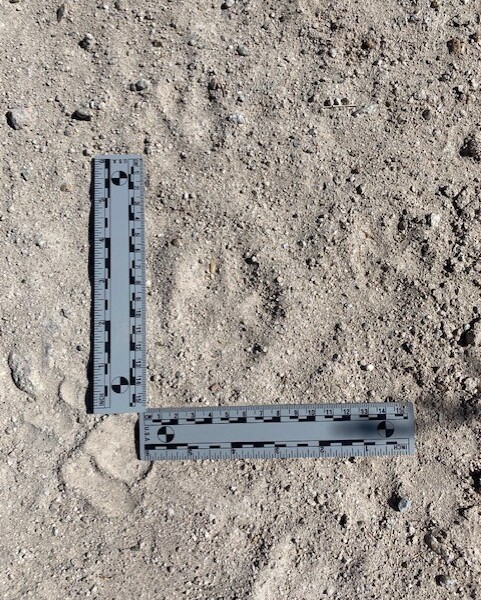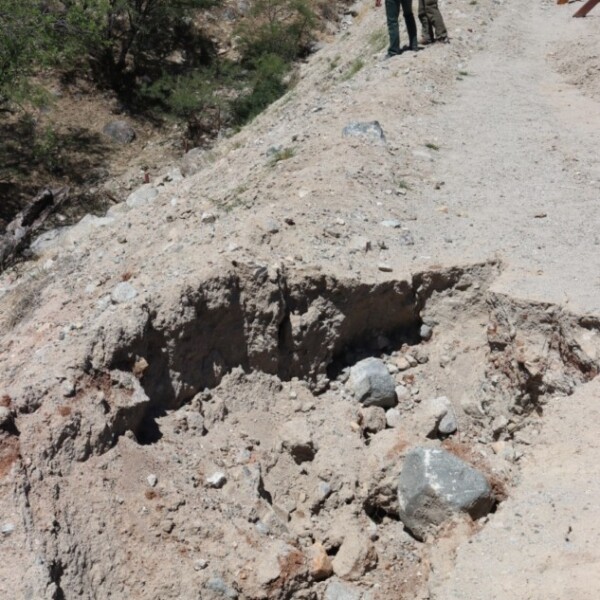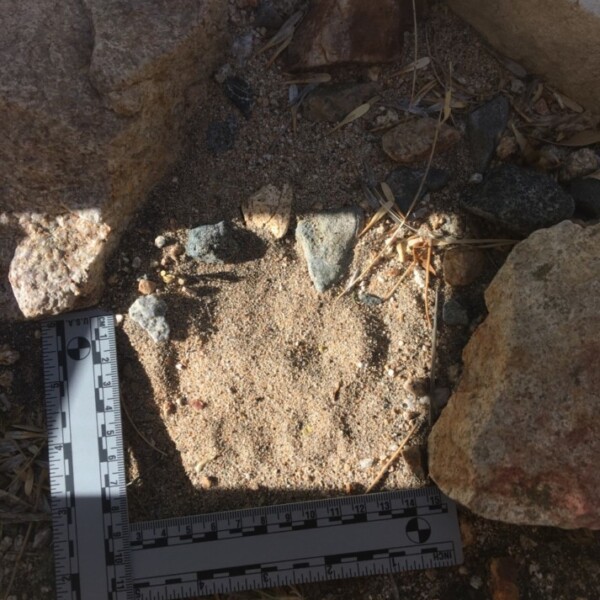Two weeks ago, five SIA trackers went down to the border along the western foothills of Arizona’s Patagonia Mountains to document wildlife use of the borderlands.
We tracked along the southern edge of our westernmost array of Border Wildlife Study cameras. This area hasn’t been blocked by a border wall thankfully. Instead, it has a mix of vehicle barriers and barbed wire, which allow for a wide variety of wildlife to cross the border relatively freely.
Along the border road and in adjacent washes, we found evidence of mountain lion, bobcat, coyote, mule deer, ringtail, jackrabbit, and javelina. We were even able to find tracks and trails of wildlife that were crossing the border itself, showing how important free movement is to these animals.
Unfortunately we were also able to see firsthand the destruction of the borderlands by the barrier construction. The road that we were tracking along was built hastily during the last days of the Trump administration, and clearly little thought was given to the landscape during bulldozing. The road along this stretch of border is about 100 feet wide along much of its length, and it acts as a dam in every spot where it crosses a drainage.
At these locations, not only did the road cause flooding during our monsoon last year, but the road itself has sustained extensive erosional damage from water flowing off the road surface. It’s clear that it won’t take long for these road crossings to blow out — sending water, debris, and border infrastructure flowing south into Mexican ranches and communities.
Because so much of our Sky Island borderlands are now blocked by an impassible wall, the few spots that remain open to wildlife have become even more important. Unfortunately the risk to these areas is far from over, as they too could be blocked by a wall at any point. We hope that by documenting the importance of these areas as wildlife corridors, we can help convince the public and decision-makers that we need to keep these stretches of border open for wildlife.
Want to join us sometime?
Make sure you’re signed up for our weekly emails, and we’ll let you know about upcoming trainings for wildlife tracking. In the meantime, you can learn more about the situation at the border in this story map from Wildlands Network.



